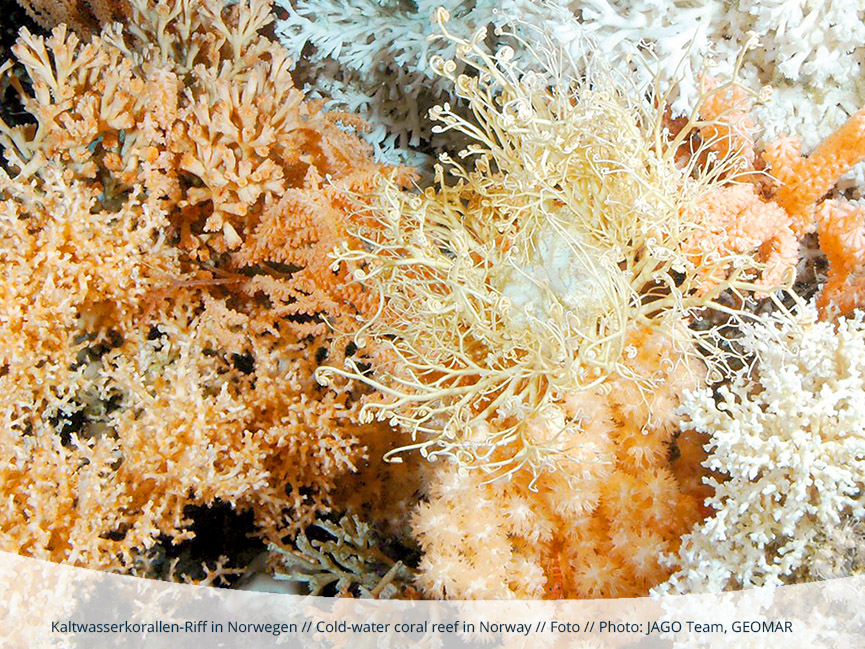
Is there hope for Lophelia pertusa?
Case study
The world of Lophelia pertusa is chilly and dark – but stunningly colourful. Unlike tropical corals, these beauties of the cold are not fed by photosynthesising algae, but catch plankton that drifts by. Because they do not depend on light to thrive, they can exist in ocean depths of hundreds or even thousands of metres.
As a reef engineer, Lophelia pertusa forms solid branches that can be white as snow, orange or rose. Yellow sponges and pink “bubblegum corals” stand up between them, often crowded with brittle stars and basket stars. Nestled in the thicket, clams filter food from the water. Crabs and shrimps crawl through this bustle, while fish circle above it. Lophelia reefs are teeming with life. They are as impressive as their tropical counterparts and can be found all around the globe.
Because they build their skeletons from aragonite, a highly soluble form of calcium carbonate, cold-water corals such as Lophelia pertusa are considered particularly threatened by ocean acidification. Therefore, BIOACID scientists exposed living Lophelia corals to simulations of future carbon dioxide concentrations and water temperatures in their laboratories. Under more acidified conditions and an unchanged temperature, the growth rates of the corals decreased. An elevated temperature alone increased growth rates. When acidification was combined with elevated temperature, the corals grew at similar rates as under today’s conditions. Thus, in combination the effects of the two different factors compensated each other.
Is this a sign of hope? Researchers are convinced that the overall reaction of the corals strongly depends on the extent at which the ocean acidifies and on the water temperatures the corals experience in the future. Lophelia pertusa might only benefit from rising temperatures as long as they remain within the limits this species is currently experiencing within its distribution range. In some regions, however, they are already at their temperature limit. If temperatures continue to rise, warming could amplify the negative effect of ocean acidification instead of compensate it.
Another cause for concern is the fact that only living corals may be able to resist changing conditions. Dead Lophelia branches are not protected by organic tissue and might therefore corrode more easily in acidifying waters. But these parts provide the foundation of today’s reefs that are so astonishingly rich in species. Further experiments both at the laboratory and in the field will show how flexible Lophelia pertusa responds to environmental changes in its natural habitat and where there are limits to its acclimatisation potential. But to definitely preserve the magnificent oases of biodiversity founded by Lophelia pertusa, effects of global climate change need to be minimised even now – while science continues to investigate this complex marine ecosystem.
Learn more about BIOACID research on Lophelia pertusa in this video portrait of Janina Büscher.
READ MORE: Case study: Ecosystem engineer under multiple stress